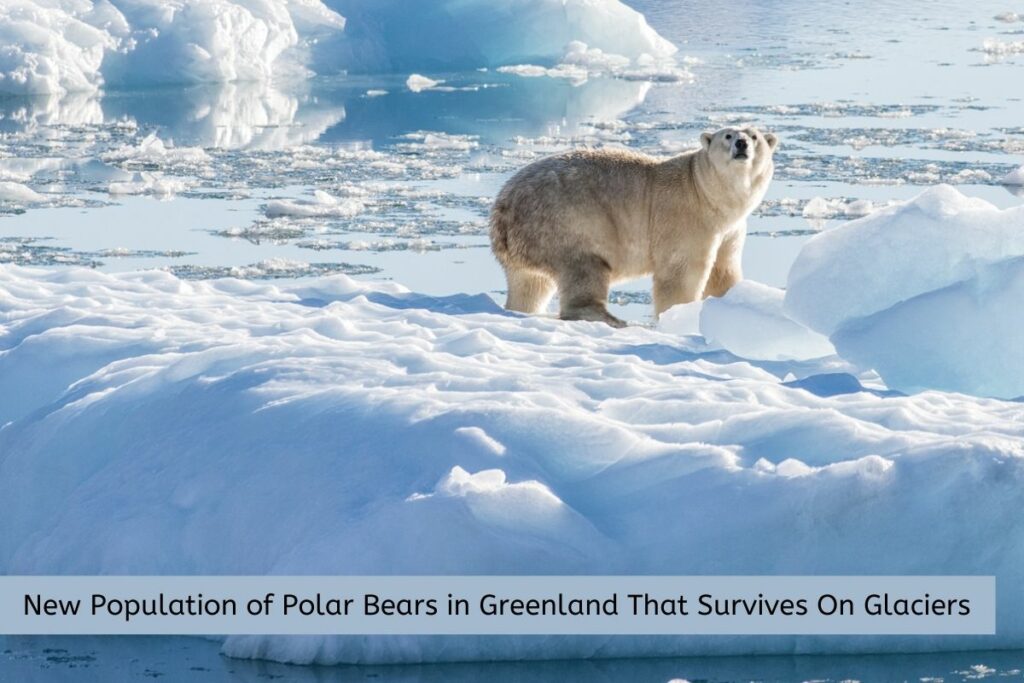Most of the time, polar bears have to hunt on solid sea ice to get food. Seals need to breathe, so they pop their heads up through holes in the frozen water. Bears wait for them there and eat them. Now, though, scientists have found a group of polar bears in southeastern Greenland that do things differently.
These bears use a slushy mix of freshwater snow and ice to ambush seals. This new population may be able to tell us something about how polar bears will do as the Arctic warms up at an alarming rate and the sea ice melts, putting many polar bears at risk of starvation.
Scientists report today in Science that the polar bears in southeastern Greenland have different genes than polar bears in other parts of the country. This small group of only a few hundred polar bears is one of only 20 subpopulations in the world. “This group of bears in southeast Greenland is the most genetically unique group of polar bears ever seen,” says Elizabeth Peacock, a polar bear biologist at Emory University who was not involved in the work.
In 1830, people from the West first saw polar bears in the fjords of southeastern Greenland. This area is full of mountains and jagged icebergs. The animals live just a few degrees south of their closest relatives, who live in polar bear environments that are more typical. The unpredictable weather and heavy snowfall at the rough southern tip of Greenland make it hard to study the bears that live there.
But Kristin Laidre, an ecologist at the Polar Science Center at the University of Washington, and her colleagues were able to get to the harsh area with heavy-duty helicopters. To make sure the bears could get back to their research base, which was 4 hours away in a Greenlandic coastal town, the scientists put fuel in the snow at key spots in the bears’ habitat years before.
Over the course of 7 years, the team had access to the smart bears in the area that had never been possible before. They put satellite tags on 27 local bears to find out where they went. Then, they compared this information with data from more than 30 years of tracking polar bears along Greenland’s eastern coast. They added to this information with observations from traditional subsistence hunters in nearby communities. These hunters gave the scientists genetic samples from bears they had killed.
Most likely, the bears have different genes because their habitats have kept them apart. Polar bears in the southeastern part of Greenland are surrounded by mountains to the west and strong currents to the east. Moving on land is hard in the southeast corner of Greenland because there are fjords and steep cliffs there.
Read More: Who Is Tabitha Brown? Why Everyone Is Talking About Her Collection And Illness Too?
Since there isn’t much sea ice more than 250 days a year, the animals use floating blocks of glacial ice that break off the Greenland Ice Sheet to catch seals that aren’t paying attention. This is the first time polar bears have been seen using frozen freshwater for most of the year. As the sea ice in the area continues to melt, Laidre and her colleagues think that this slushy glacial mix gives these bears another place to hunt in the Arctic that is getting warmer.
In their harsh environment, these polar bears are mostly homebodies who stick to the glacial ice in their local fjords. The researchers found that female polar bears in this part of Greenland travel just 10 kilometers on average in 4 days. This is much less than the nearly 40 kilometres that female bears in northeastern Greenland travel in the same amount of time. But these bears aren’t lazy. About half of the animals the team followed walked an average of 190 kilometres to get back to their home fjords after their chunk of glacial ice drifted south on one of the coast’s strong currents.
Aside from the southeast corner of Greenland and the Svalbard archipelago in Norway, these kinds of places are not very common. Laidre says, “This isn’t a lifeboat for all polar bears.” Peacock is on board. She says, “This is a very small part of the world.” “It doesn’t change how polar bears are treated in the Arctic.” In fact, these few hundred polar bears are more likely to be affected by climate change because they live near the southern edge of their species’ range.
Read More: Unofficial Count Shows Monarch Butterflies Coming To California
Laidre says that even so, the smart bears in southeastern Greenland can teach scientists important things about how melting sea ice may affect these animals. Compared to bears on the northern coast of Greenland, female polar bears in the southeast are smaller and have fewer cubs. She thinks that more research on these animals will help scientists figure out how polar bears will do as sea ice melts and separates different groups of them. “They are an important group because they can help us see into the future.”

